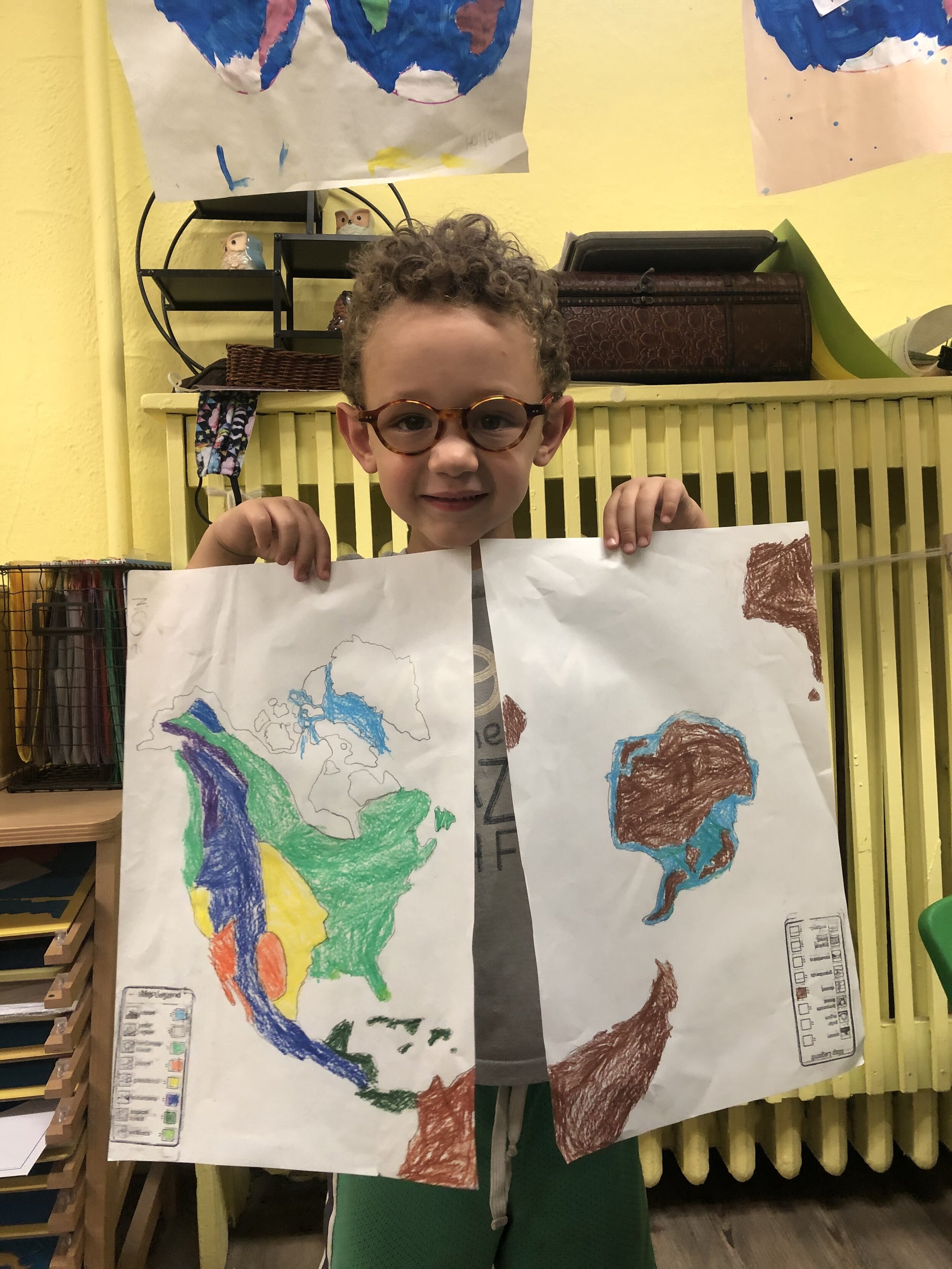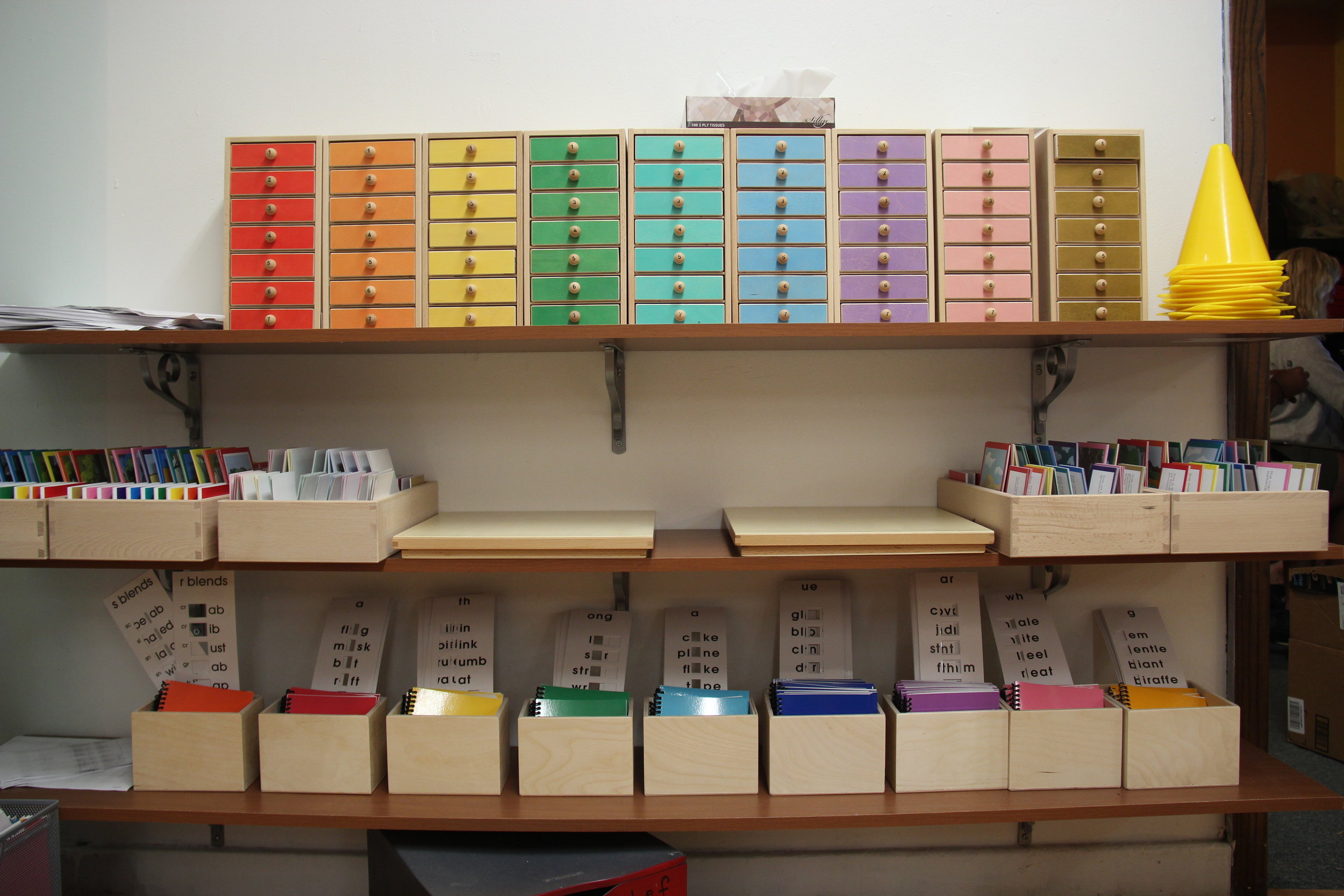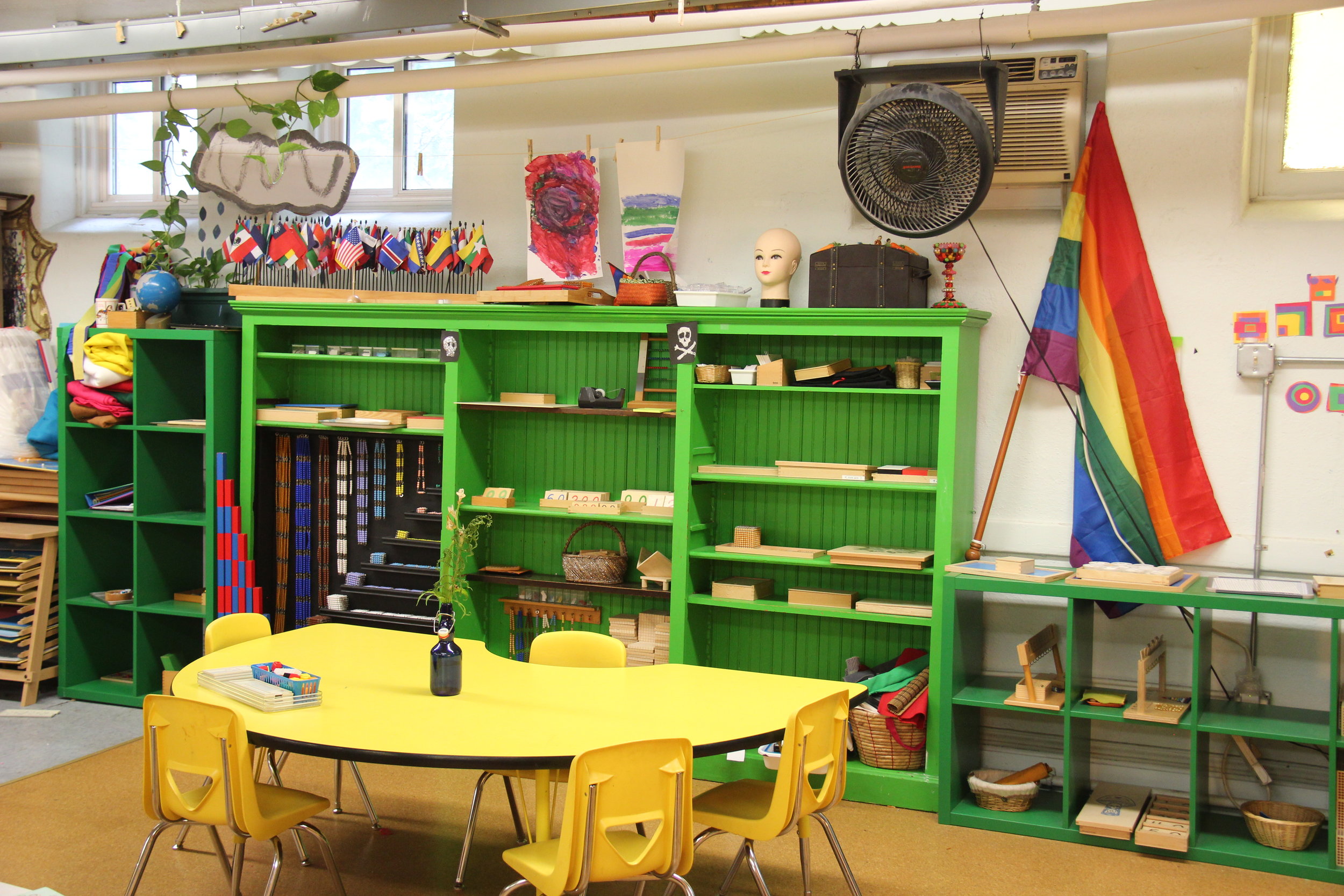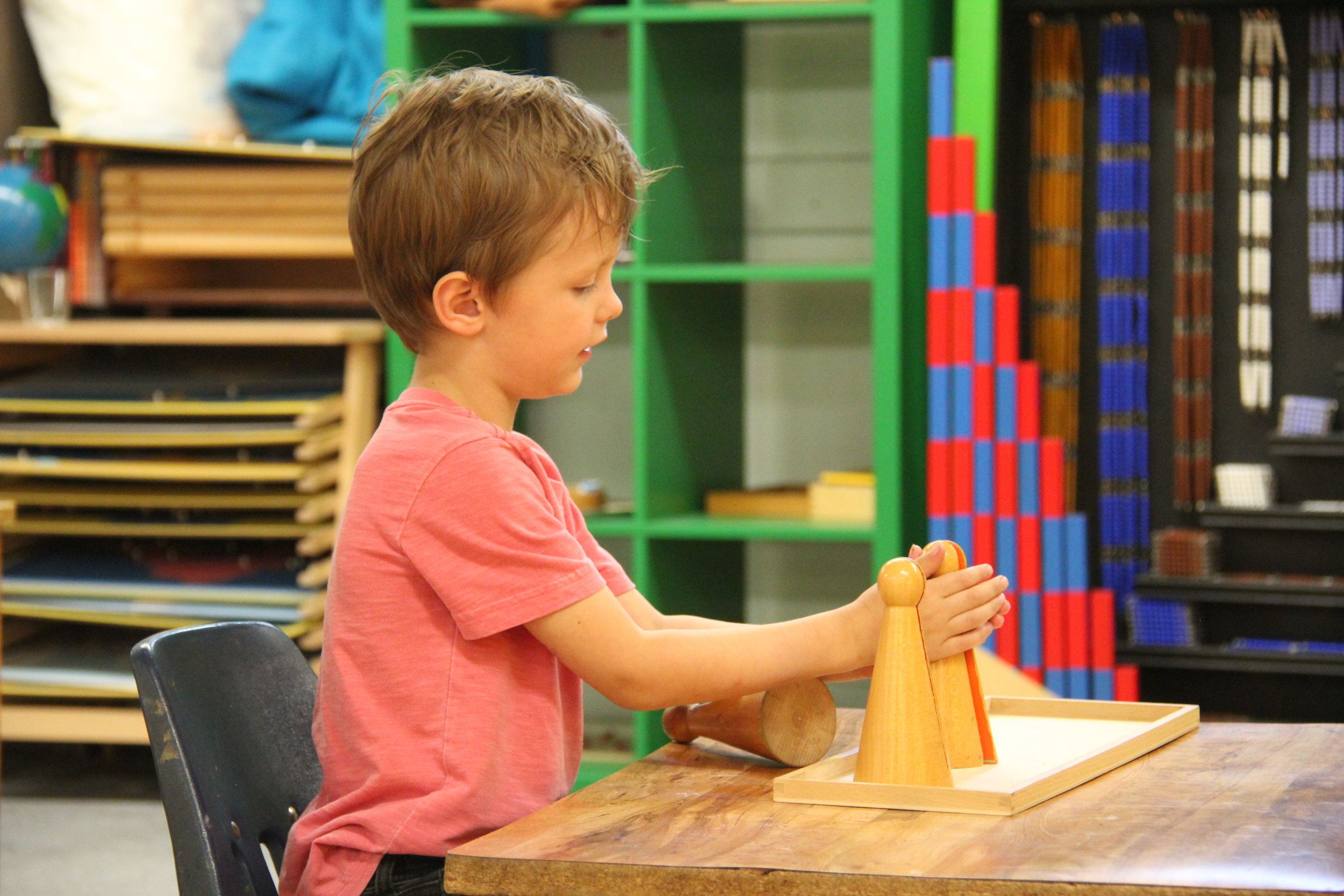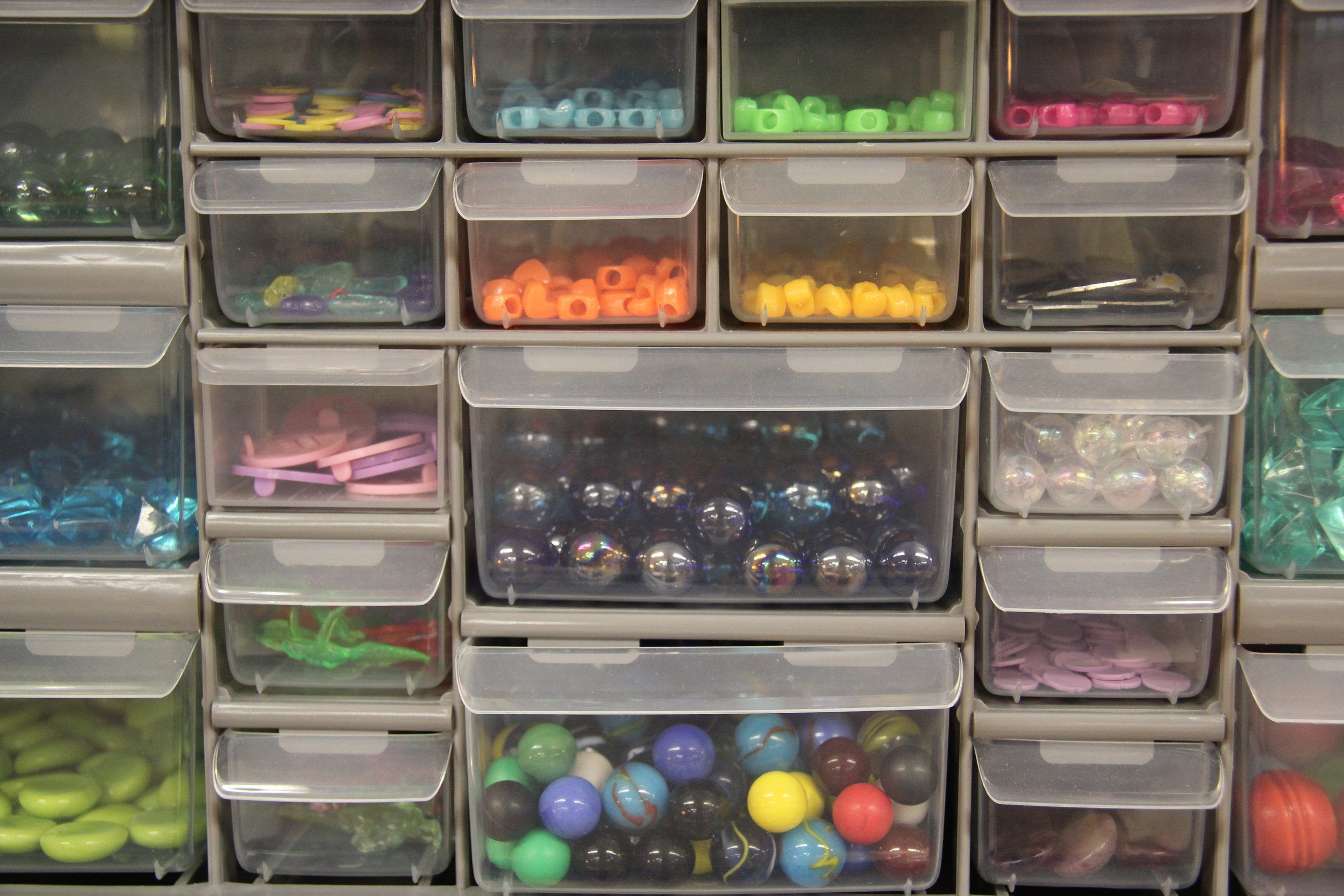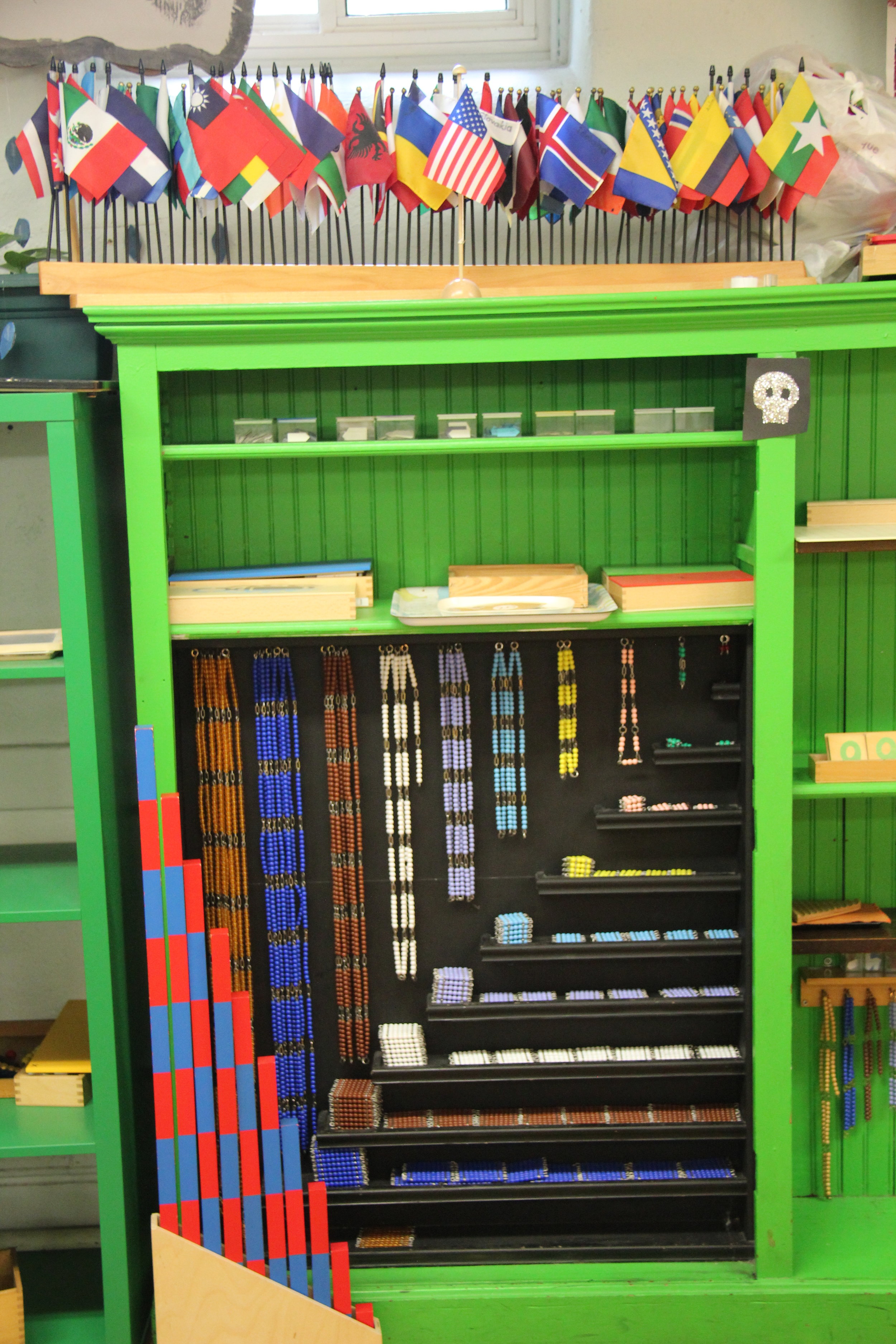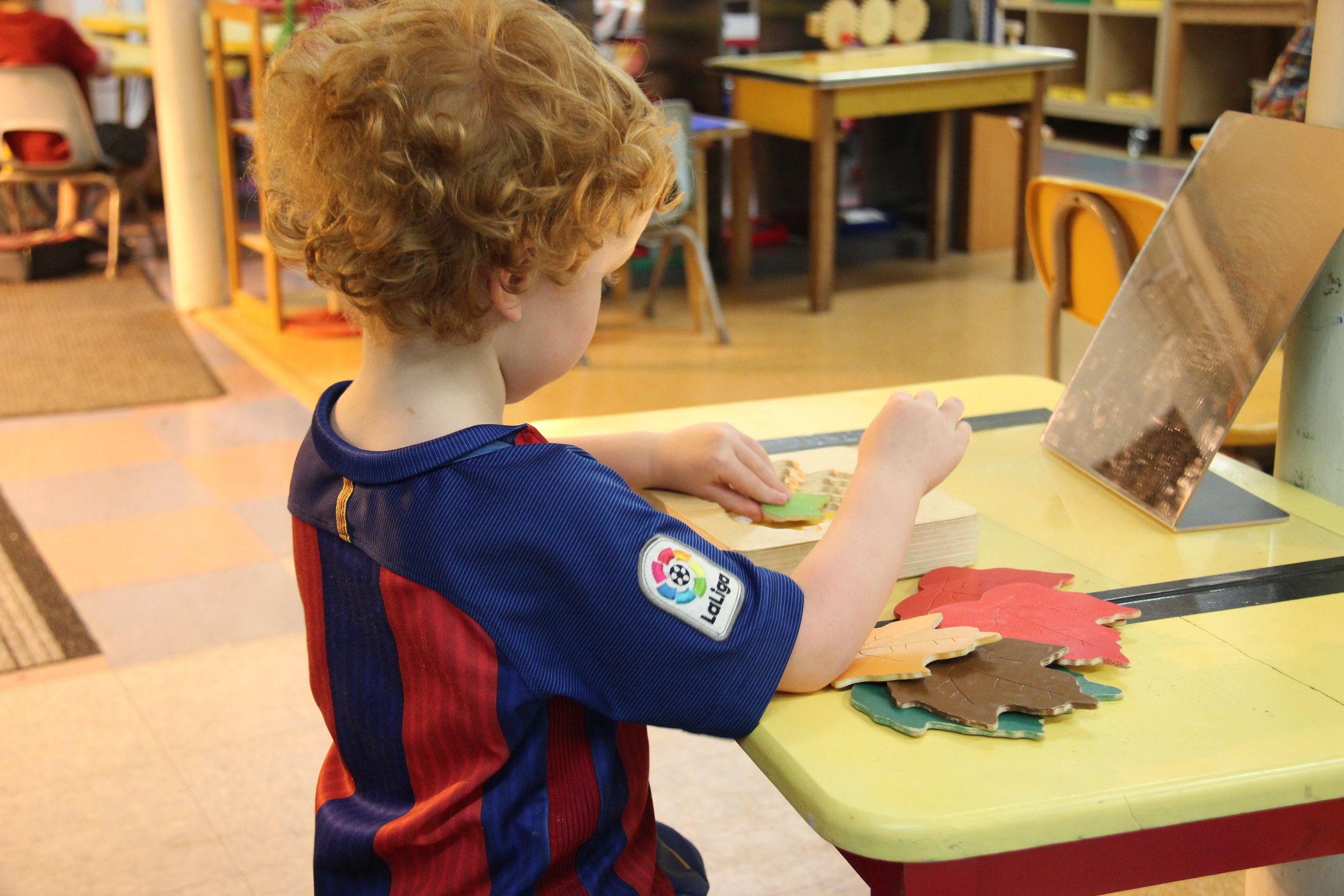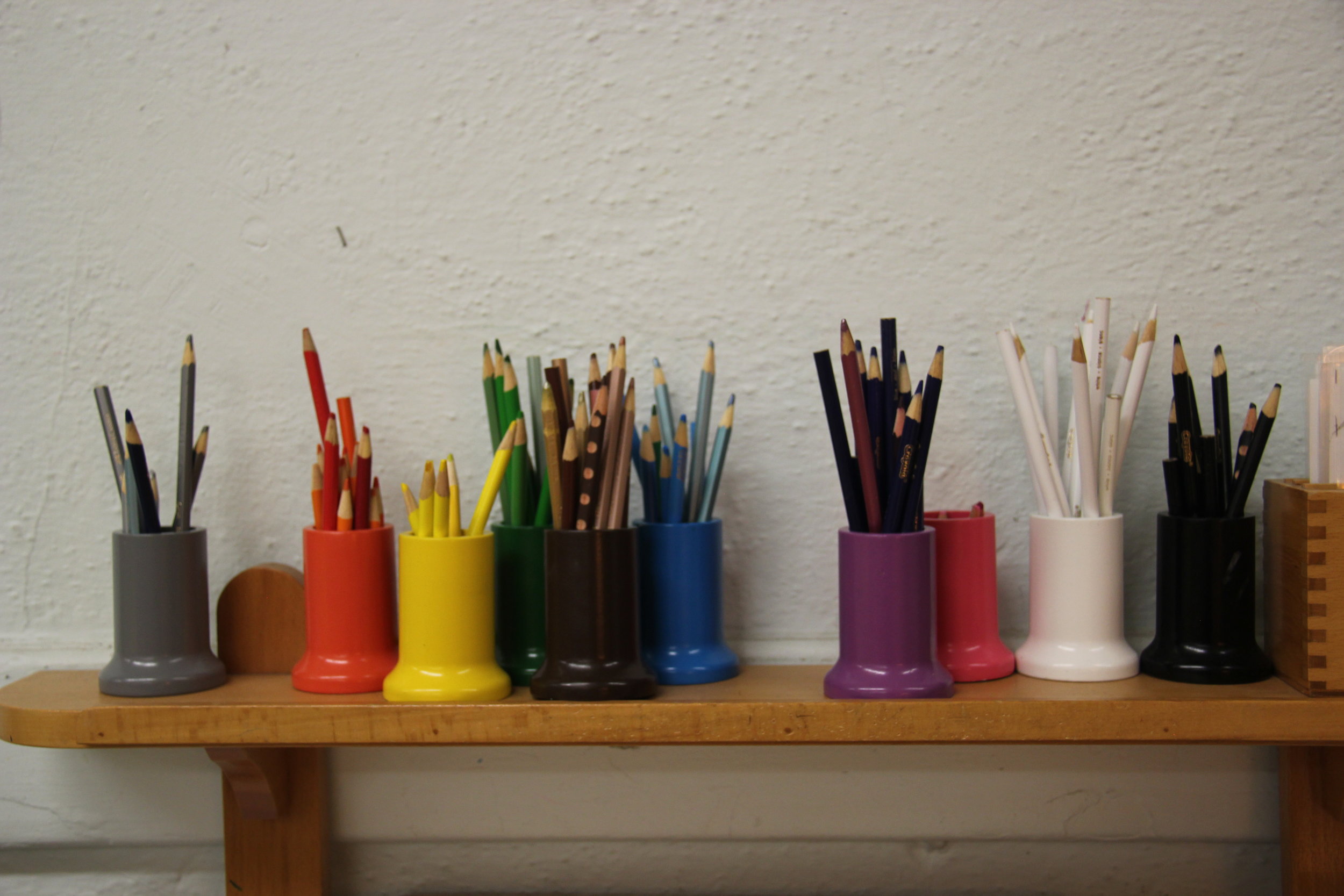A Montessori Classroom is built around Three Pillars.
1. Practical Life
Practical Life is a holistic concept that involves sharpening a child’s concentration, coordination and attention focus as well as other skills that will bolster a child’s sense of wellbeing and independence. Practical Life activities are in a specific area of the classroom but they also expand into the larger classroom, i.e. how to resolve a conflict, work with a partner, push in a chair, roll up a mat etc.
In the practical life area of the classroom, there are many items a child may see his own parents using. The materials in this area are an exact replica, albeit smaller, of the tools and materials at home. This area allows a child to gain mastery over specific tasks that adults typically do, such as pouring juice out of a pitcher, sawing and hammering wood, washing dishes and more. A child who can successfully master the same tasks parents do at home has a feeling that his work is valuable and thus gains an increased sense of self-esteem.
The Montessori Method encourages a student to maintain their own classroom environment. If a child spills, they are shown the tools to clean it up. After they complete a task the materials are put away in a clean and orderly fashion so the next student can use them. They are taught how to care for and maintain classroom plants and animals.
They are also taught how to care for and help one another. Showing a new student how to do an activity as opposed to telling them, comforting a distraught classmate, taking care with other children’s work and respecting each others differences are all aspects of Practical Life lessons and an integral part of a Montessori classroom.
2. SensorY Exploration AREA
Babies take in the world through their senses—the pathways to learning about the world around them. Dr. Montessori developed the material in the sensorial area to stimulate and refine a child’s specific sense and gain a deeper understanding of the sights and sounds surrounding them.
Dr. Montessori wrote about specific periods during a child’s development in which a child’s sense proclivity is heightened. During this “sensitive period” a child will often focus on one specific task/interest to the exclusion of all other activities. These important periods provide an opportunity for a child to delve deeper into an activity and thus refining and heighten a specific sense.
Each item in this area emphasizes specific sense. Here children can organize and pair items by smell, weight and color, to name a few. In this area children are also working with patterns and patterns recognition. The ability to replicate a pattern is an important pre-reading and pre-math skill.
3. Mathematics
It’s important for a preschool child to gain a concrete understanding on how our numerical system works. The Montessori Method of early mathematics uses a variety of tools to demonstrate quantity. Thus a child learns naturally what 1-10 looks and feels like. The glass bead stair is a beautiful example of this. Each number corresponds with a specific color. The child builds the stair by counting or by organizing by size. Once she understands 1-10 then she can also comprehend 10-100, 100-1000 and so on. The materials allow a child to touch and hold differing quantities, thus showing how one thousand feels different than one hundred. This concrete understanding of how our numerical system works is integral to the abstract method they will learn later on.
“We especially need imagination in science. It is not all mathematics, nor all logic, but it is somewhat beauty and poetry.”


